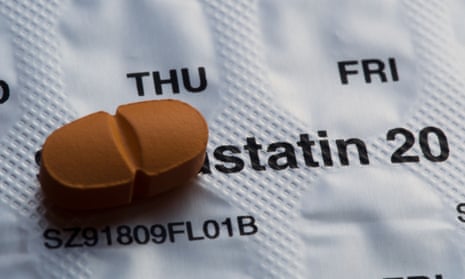Statins are being overprescribed to low-risk groups and underprescribed to high-risk groups, research by the British Journal of General Practice (BJGP) has shown.
The report found potential “undertreatment” among people who have at least a 20% chance of cardiovascular disease (CVD) within a decade, who are considered high-risk patients.
Slightly over a third (35%) of this group were prescribed statins, meaning that after risk assessments were undertaken the majority were not offered the drugs, which are prescribed to reduce cholesterol levels to help prevent heart attacks and strokes.
The report also found there could be “significant overtreatment” of statin therapy among patients who have less than a 10% chance of developing CVD within 10 years.
The risk assessment tool – which predicts a person’s risk of CVD within 10 years – was introduced in 2012 and is recommended by the National Institute for Health and Care Excellence (Nice).
Only 27.1% of patients prescribed a statin after 2012 – when the tool was introduced – were considered at risk. Nice recommends that patients with a 10% or higher chance of developing CVD should be offered statins.
One in six patients who had the risk assessment and went on to start statin therapy were in the low-risk category, the researchers found. Professor Helen Stokes-Lampard, the chair of the Royal College of GPs, responded to the findings of the BJGP, which is the college’s independent academic journal.
“Patients should be reassured that GPs are highly trained to prescribe statins and base their decisions on the circumstances of the individual patient sitting in front of them,” she said.
“This study is interesting because it looks at possible overtreatment and undertreatment, but it simplifies the true situation because it does not include any information about individual patient preferences, other health conditions, or data that was not accurately coded in patient records.
“As with any drug, taking statin medication has potential side-effects, and taking any medication long-term is a substantial undertaking for patients who need to be monitored by healthcare professionals.
“Many don’t want to take statins once they have learned all the facts – and GPs will respect patient choice.”
Researchers from the University of Birmingham looked at data from 1.4 million patients aged over 40 across 248 GP practices in England and Wales between 2000 and 2015.
During this time, 217,860 patients started statin treatment. Overall, 151,788 were recorded as having undergone the recommended risk assessment for CVD.
Nice lowered the threshold for eligible patients for CVD prevention therapy with statins in 2014. But this did “not result in the massive increase in statin initiations that was anticipated”, it said. It suggested that the peak in statin initiations in 2006 could be attributed to cheaper drugs and health officials recommending their use. This could have resulted in a saturation of the population who were eligible and willing to take statins over the next few years, they added.
